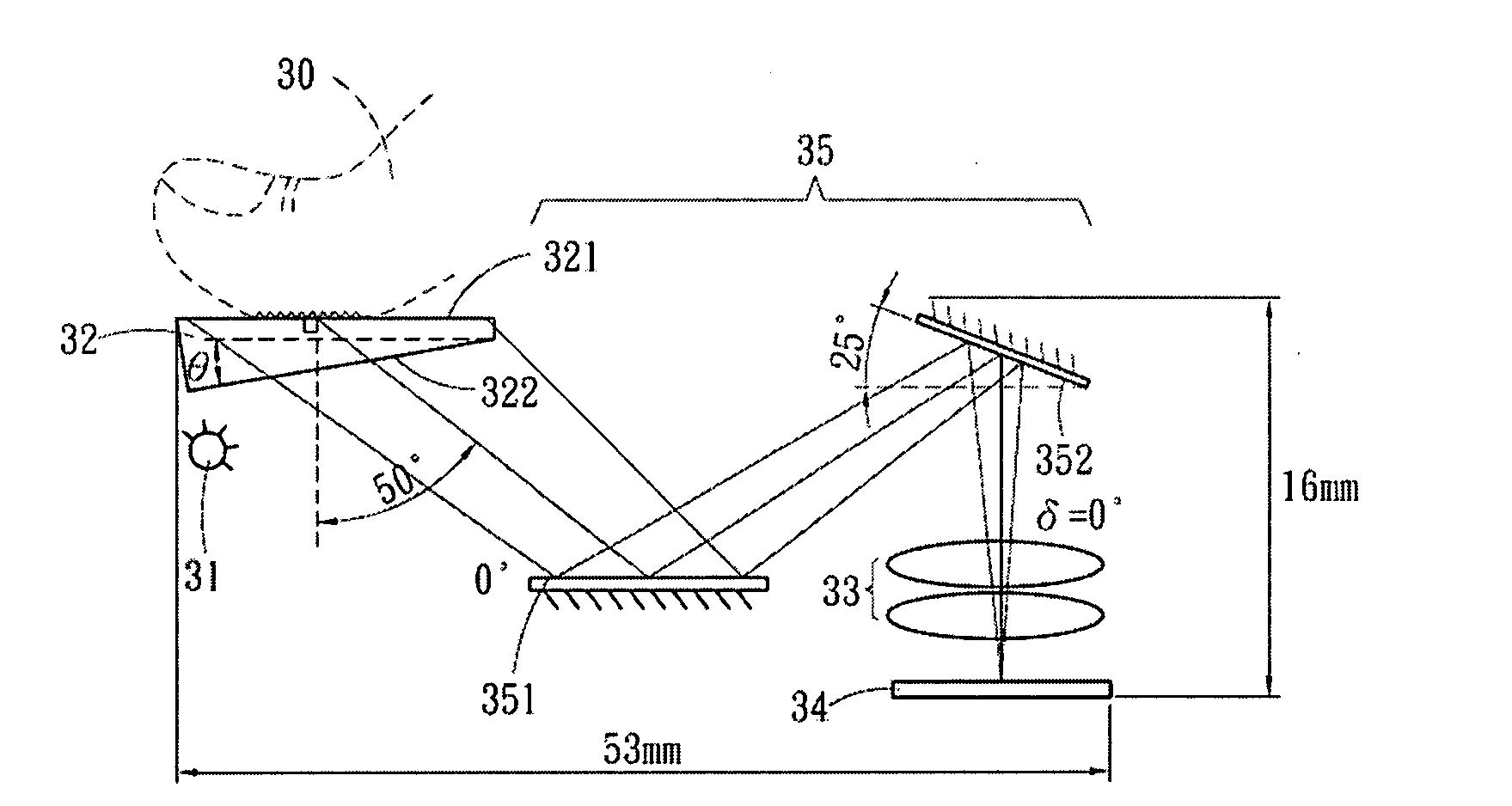Fingerprint identification system
a fingerprint identification and fingerprint technology, applied in the field of fingerprint identification system, can solve the problems of large space in the fingerprint identification system of the prior art, a number of flaws in the prior art, and a large amount of space not fully utilized, so as to reduce production output and acceptance rate, and prolong the production cycle
- Summary
- Abstract
- Description
- Claims
- Application Information
AI Technical Summary
Benefits of technology
Problems solved by technology
Method used
Image
Examples
Embodiment Construction
[0027]Referring to FIG. 4 for a schematic view of a first preferred embodiment of the present invention, a fingerprint ID system includes a light source 31 to directly irradiate beams on a wedge shaped device 32 pervious to light, and the device 32 is made either of glass or plastic material, or a combination of both. A fingerprint side 321 contacts a finger 30 is disposed on the device 32 to retrieve an total internal reflection fingerprint image by controlling an angle θ defined by the fingerprint side 321 and a beam output side 322 of the device 32. The angle θ ranges between 0°˜45° and an included angle defined by the light output side 322 and a bottom of the system is not necessarily at a right angle thus to reduce the volume of conventional device pervious to light in the fingerprint ID system. A reflection device group 35 is disposed behind the device 32 pervious to light for the purpose to allow transit of beams fully utilize the space. The final beam arrives at a lens unit ...
PUM
 Login to View More
Login to View More Abstract
Description
Claims
Application Information
 Login to View More
Login to View More - R&D
- Intellectual Property
- Life Sciences
- Materials
- Tech Scout
- Unparalleled Data Quality
- Higher Quality Content
- 60% Fewer Hallucinations
Browse by: Latest US Patents, China's latest patents, Technical Efficacy Thesaurus, Application Domain, Technology Topic, Popular Technical Reports.
© 2025 PatSnap. All rights reserved.Legal|Privacy policy|Modern Slavery Act Transparency Statement|Sitemap|About US| Contact US: help@patsnap.com



